SEO Checklist for Blog Posts in 2025
Apr 21, 2025
Written by Casey Bjorkdahl

Casey Bjorkdahl is one of the pioneering thought leaders in the SEO community. In 2010, Casey co-founded Vazoola after working for a Digital Marketing Agency for five years in New York City. Vazoola is now one of the fastest growing and most widely recognized SEO marketing firms in the country.
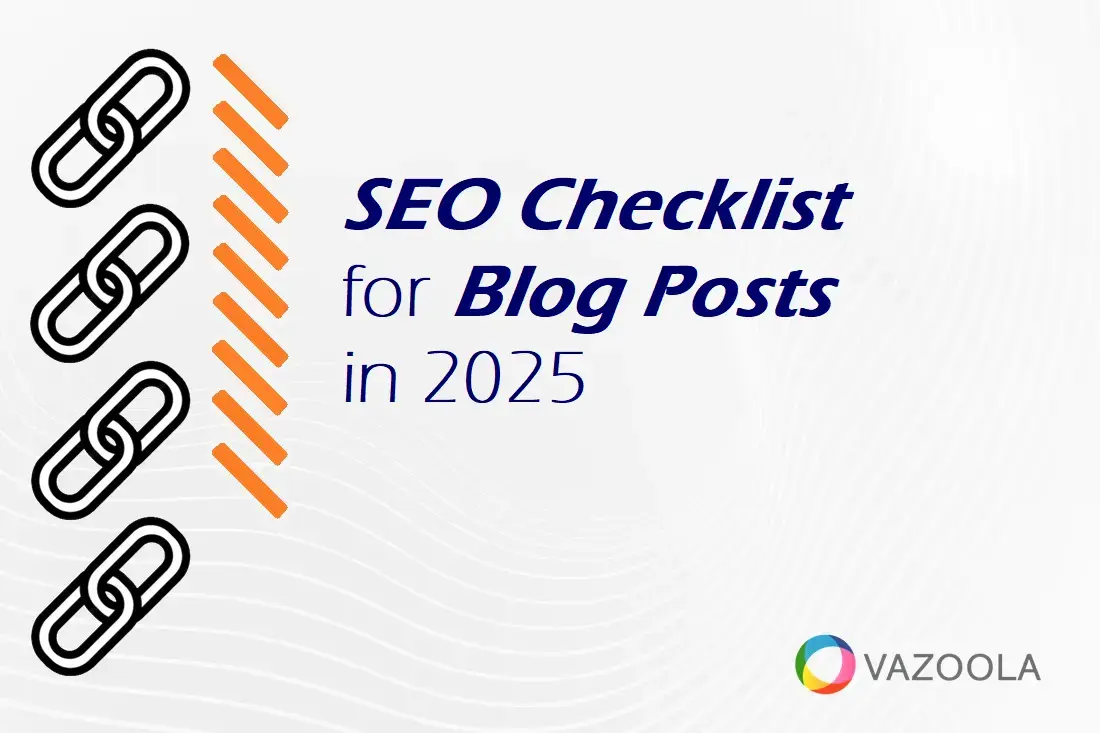
Do blogs help SEO?
Blogging remains a powerful tool for businesses in 2025, but simply publishing the content is not enough.
With Google's ever-evolving search algorithms and more emphasis on valuable, user-oriented content, each blog post must be optimized for search. A well-structured, engaging, and search-friendly blog can drive organic traffic, increase engagement, and build brand authority.
But so many marketers and content creators struggle to keep up with SEO best practices. What once was helpful may no longer be effective.
In fact, according to research from Orbit Media, 52% of bloggers now feel generating traffic is their biggest challenge. A full 53% said it’s gotten harder to attract visitors from search engines.
But how do blogs help SEO? What are the benefits of blogging for SEO?
Search engines increasingly value content based on its utility, rewarding the posts that adequately respond to users' queries thoroughly and keep visitors engaged.
Our handy checklist will walk you through optimizing your blog posts for search in 2025. We’ve covered everything from keyword planning to metadata, link building, and technical optimization.
By following these simple steps, you’ll ensure your content is not only search engine-friendly but also provides real value to your audience – boosting both rankings and reader engagement.
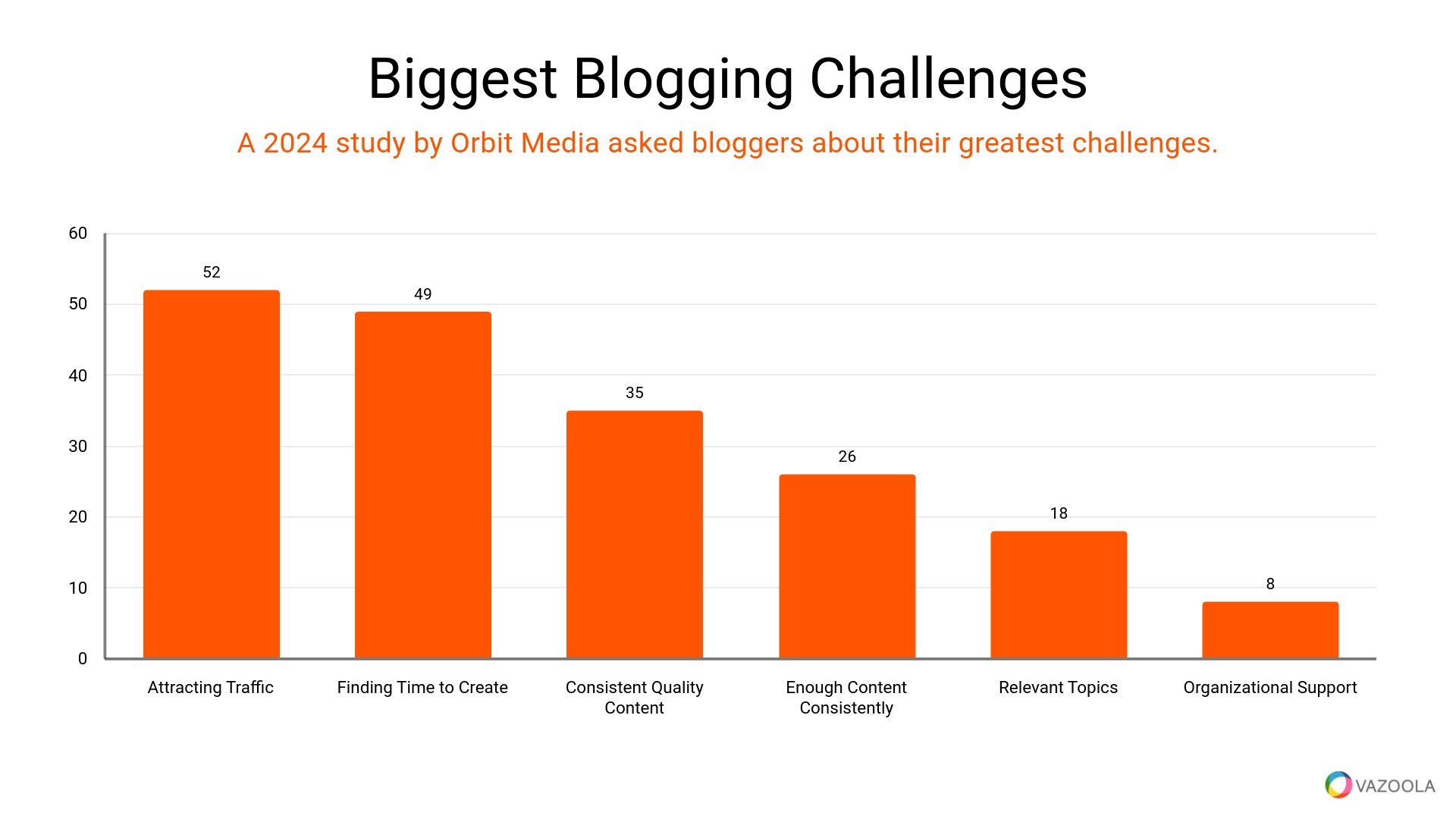
Key Takeaways About Our Blog Post SEO Checklist
-
Blogging is a vital part of a strong SEO strategy, but it has to prioritize value over keyword stuffing.
-
Search engines favor well-structured, informative, and engaging content that keeps readers on the page longer.
-
Optimizing technical SEO elements, including URLs, metadata, title tags, and internal linking, can significantly boost your search rankings.
Table of Contents
Does Blogging Help SEO, and How?
Many marketers wonder whether blogging still plays a role in SEO. So, does it?
While blogging itself is not a direct ranking factor, it strengthens a website’s SEO strategy in several ways:
-
Content Freshness: Consistently publishing new content signals to Google that your site is active and relevant, increasing the likelihood of frequent indexing.
-
Long-Tail Keywords: SEO blog writing provides opportunities to rank for niche, lower-competition search terms.
-
Increased Engagement and Lower Bounce Rate: Engaging blog content keeps readers on your site longer. It signals relevance to search engines like Google and improves dwell time.
-
Internal Link Opportunities: Well-structured, SEO-friendly blogs can direct users to other important pages. This improves site navigation and user experience.
-
Authority and Credibility: Informative blog content builds trust among readers, which further boosts engagement and search engine trust.
The 2024 report from Orbit Media found that bloggers who focus on SEO optimization and long-form content report higher engagement and ranking improvements.
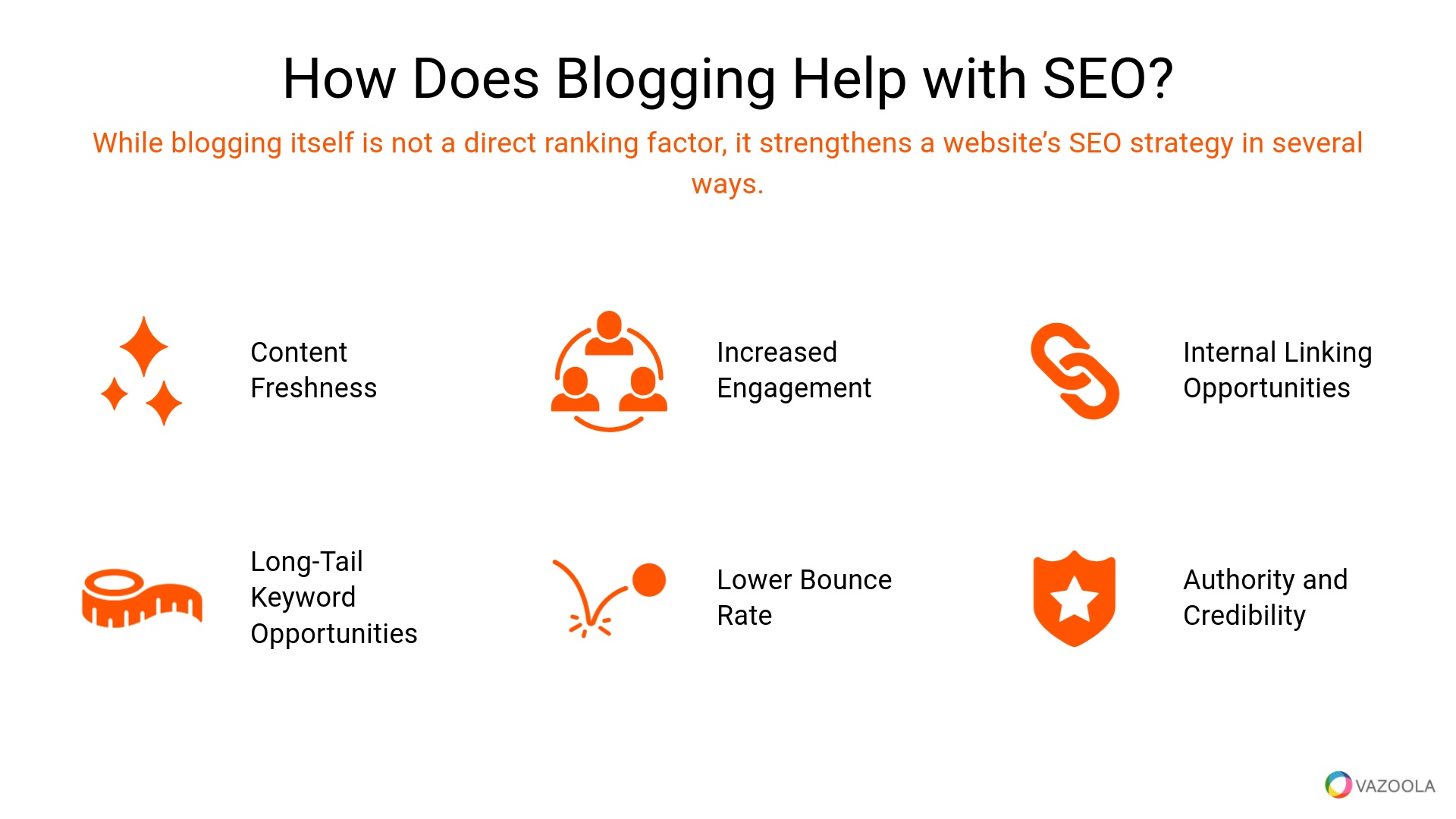
Does Your Blog Need an Audit?
Before you optimize your blog, assess your current blog performance. A technical SEO audit ensures that back-end elements are functioning. If your website has crawlability issues, broken links, slow load times, or unoptimized metadata, even the best blog content will struggle to rank.
Regularly check for:
-
Broken links and 404 errors
-
Mobile-friendliness
-
Page speed issues
-
Structured data errors
For a deep dive into the importance of technical SEO audits, check out Google’s guidelines.
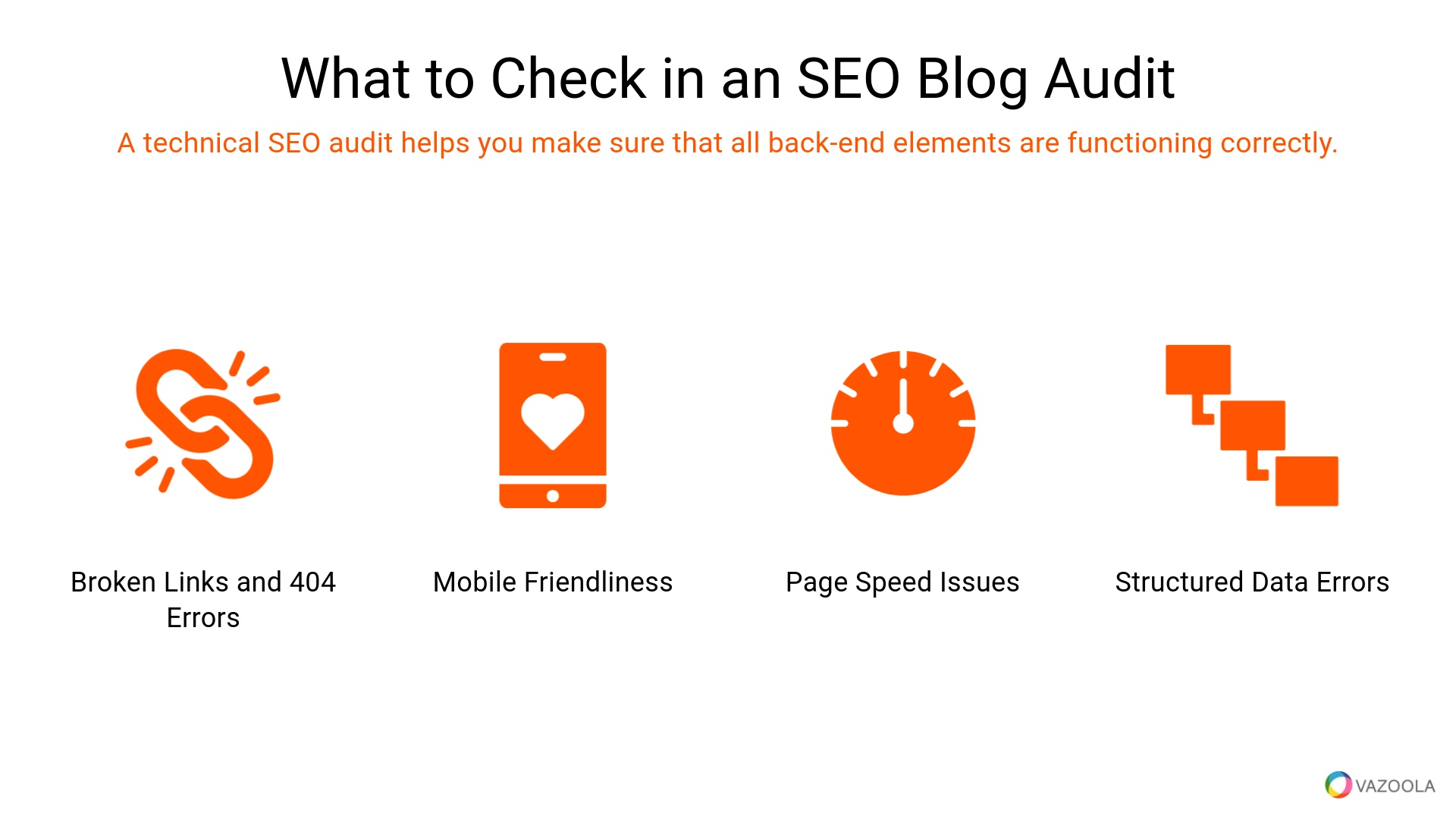
How To Optimize Blog Posts for SEO (Checklist)
The best way to elevate the searchability of your SEO-optimized blog post is to create high-quality and engaging content. If you can do that on a consistent basis, you’re already ahead of the game – and the majority of your competition.
Once you lay this important foundation of high-quality content, it's time to implement the following seven SEO blogging tips.
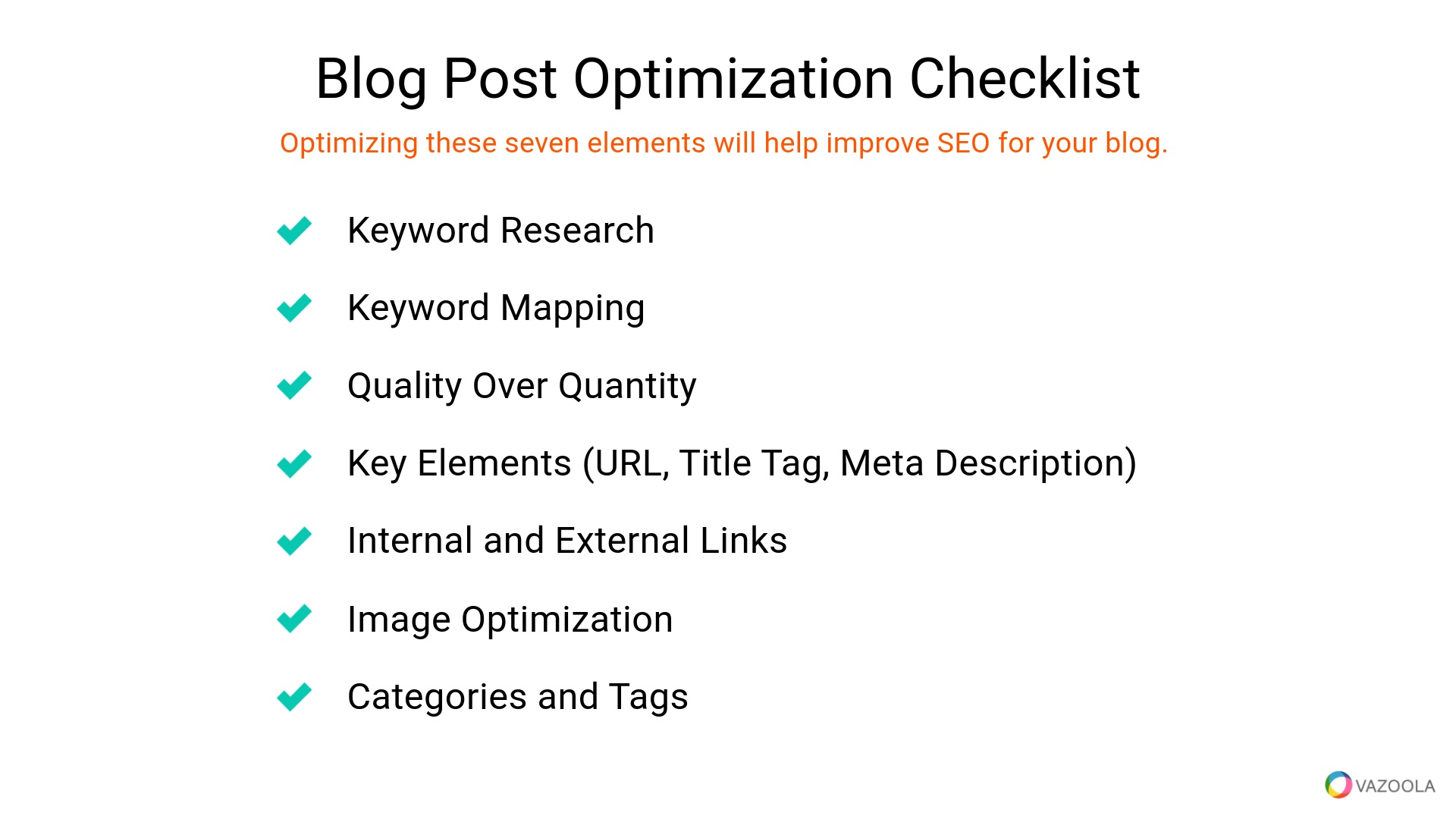
Blog Keyword Research
Finding the right keywords is critical. Rather than focusing on high-volume, competitive terms, target long-tail phrases that match your audience's needs. Prioritize search intent over keyword density—Google rewards SEO blogs that answer user questions clearly.
Relevance matters more than keyword stuffing. Make sure your selected keywords align naturally with the content's purpose. For more blog SEO tips, take a look at our post about how SEOs choose keywords.
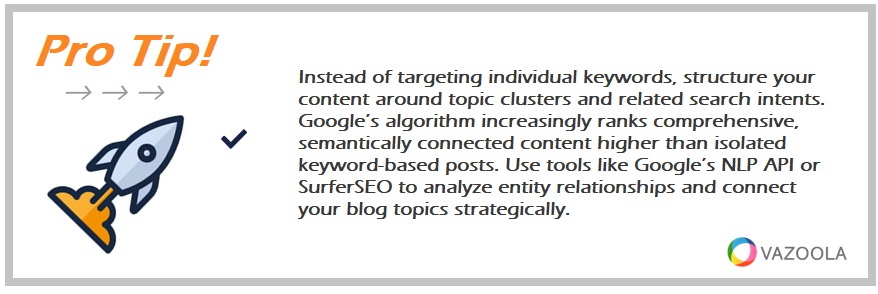
Instead of targeting individual keywords, structure your content around topic clusters and related search intents. Google’s algorithm increasingly ranks comprehensive, semantically connected content higher than isolated keyword-based posts. Use tools like Google’s NLP API or SurferSEO to analyze entity relationships and connect your blog topics strategically.
Map Your Keywords
Search intent determines why users search for specific terms. Just as its name suggests, what is the intent of the user’s search? What’s their goal? Blogs typically serve informational intent rather than transactional intent. Avoid stuffing commercial keywords into blog content – save those for landing pages.
If you’re unsure, take a moment to research SERP features (People Also Ask, Featured Snippets, etc.) to determine what users expect when they search for your target keyword.
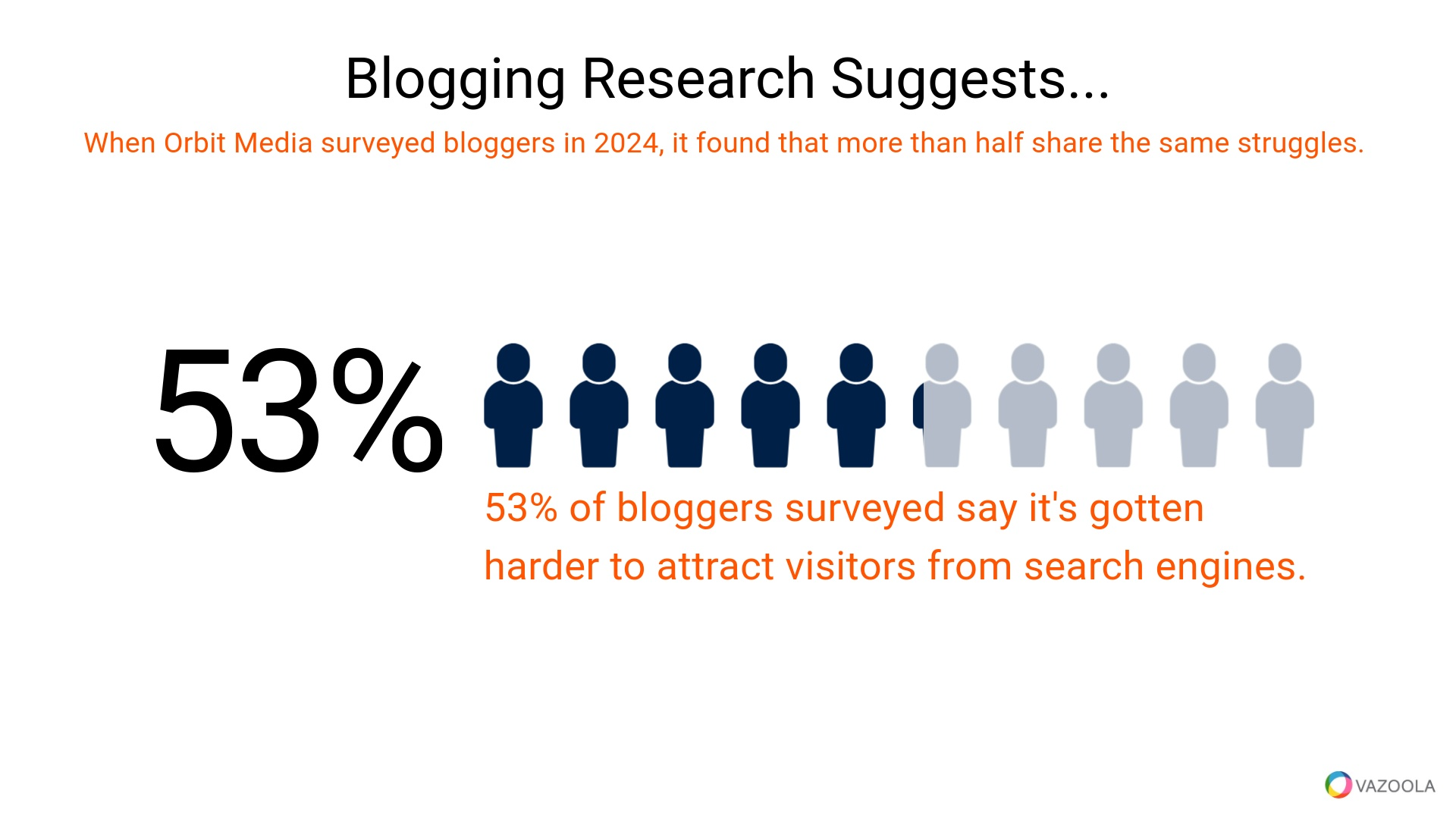
Prioritize Quality Over Quantity
Do you know how to optimize a blog post for SEO?
A long-standing blogging debate is whether long-form or short-form content performs better. While longer content – 1,500 or more words – often ranks higher, quality always wins over quantity when it comes to content Google loves.
In fact, according to our post on content length, both long-form and short-form have their advantages and disadvantages.
When determining the ideal length for a blog post, keep the following in mind:
-
Strive to publish comprehensive, well-structured content that fully answers user queries.
-
Break up text with subheadings, bullets, and visuals for better readability.
-
Make sure you’re publishing original research and expert insights to improve your credibility.
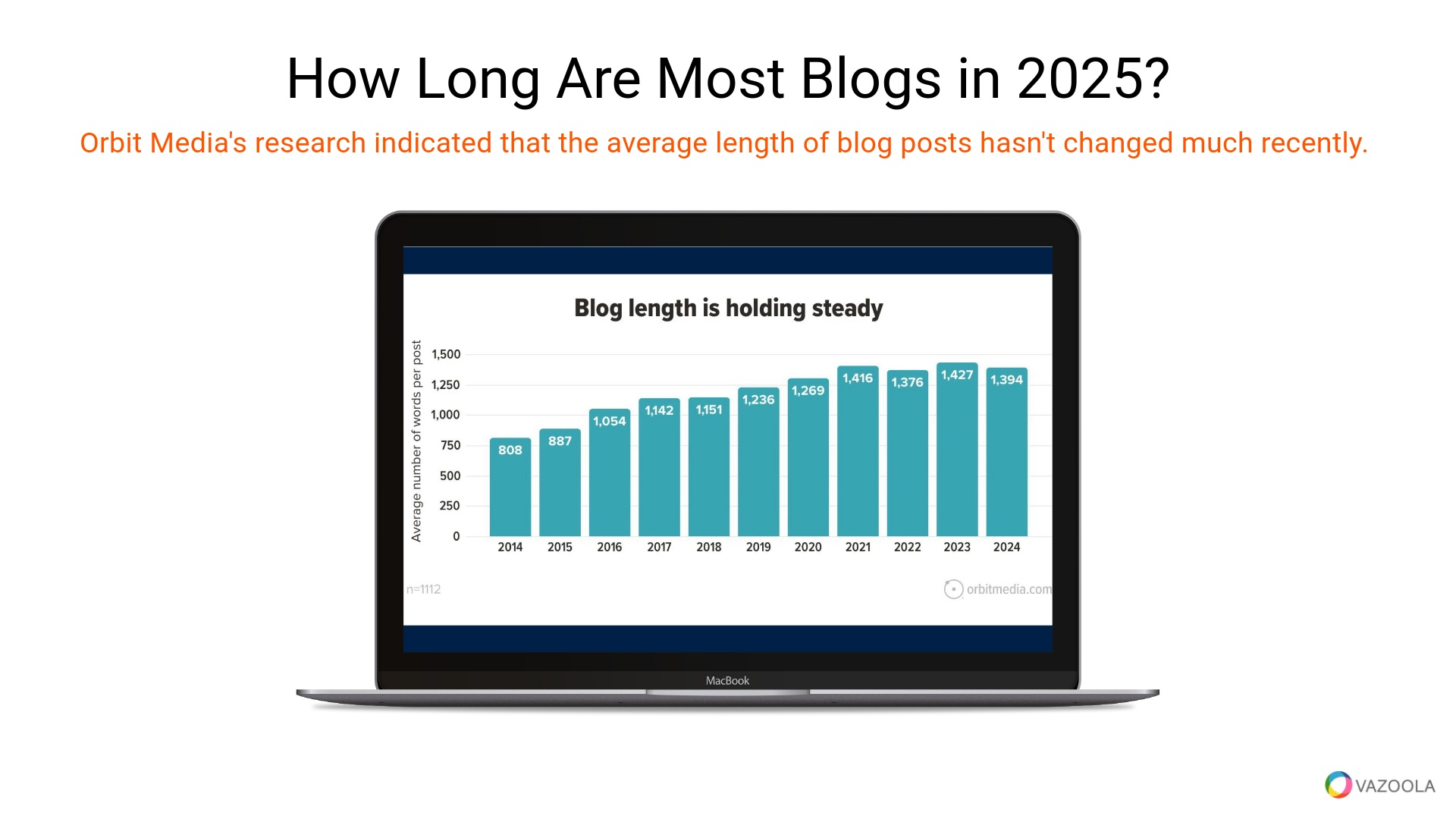
Optimize Key Elements (URL, H1, Title Tag, and Meta Description)
Every blog post should have a clean URL, an engaging headline, and well-crafted metadata to improve its blogs and SEO performance.
Be sure you optimize the following elements of your blog for best SEO for blog posts results:
-
URL Structure: Keep your URL structure concise (avoid stop words like "and" or "the") and include primary keywords.
-
SEO Headline: Great titles for SEO are both clear and compelling. They tell readers what the content is about. But they should also make the searcher want to click for more details.
-
Meta Description: Write a compelling summary (under 160 characters) to entice clicks. This is your meta description.
-
Title Tag: The title tag should iterate on your headline for best optimization.
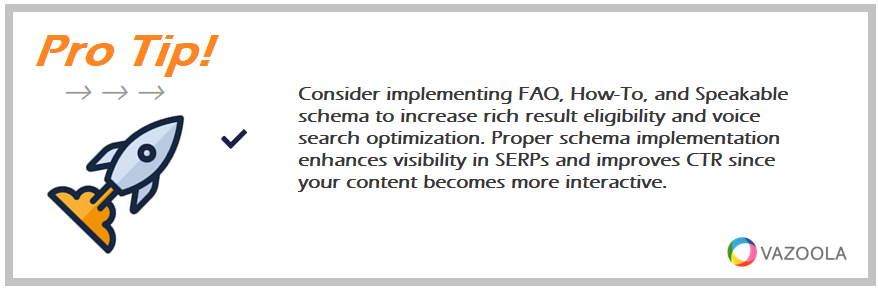
Consider implementing FAQ, How-To, and Speakable schema to increase rich result eligibility and voice search optimization. Proper schema implementation enhances visibility in SERPs and improves CTR since your content becomes more interactive.
Include Internal and External Links
A strategic use of both internal and external links helps with SEO for blogs, but it also boosts credibility and elevates user experience. Keep in mind:
-
Internal Links: Connect related posts naturally with internal links to improve navigation and distribute link equity. Keep them within the same browser window for seamless user experience.
-
External Links: Link to authoritative sources to support claims. Ensure external links open in a new tab to prevent losing visitors.

Instead of randomly linking to related articles, strategically pass authority to high-priority pages by adjusting anchor text distribution and link frequency. Consider using "nofollow" on less important internal links to funnel PageRank more effectively to your most valuable content.
Optimize Images
Visual elements enhance blog readability, but they can slow page speed if unoptimized. These blogging SEO tips will help you optimize your images:
-
Compress your images before uploading them.
-
Use descriptive alt text for better accessibility and search engine indexing.
-
Consider AI-powered tools like the ones offered by Ahrefs or AltText.ai to generate alt text automatically.

Video and interactive elements are becoming critical for user engagement. Enhance your blog posts by embedding high-retention videos (with structured descriptions), audio snippets, and interactive infographics. Use lazy loading for media elements to maintain page speed while improving dwell time.
Use Categories and Tags
Many bloggers misuse categories and tags, which can lead to duplicate content issues. The general rule is to use just one category per blog post for broader classification. But be sure you add multiple tags per post as specific descriptors.
Platforms like WordPress even offer plugins that let you control how your categories and tags appear in search results.
More SEO Tips for Bloggers and SEO Marketing Blogs
Optimizing content doesn’t stop just because it’s published. To maximize visibility, be sure you implement these post-publishing strategies:
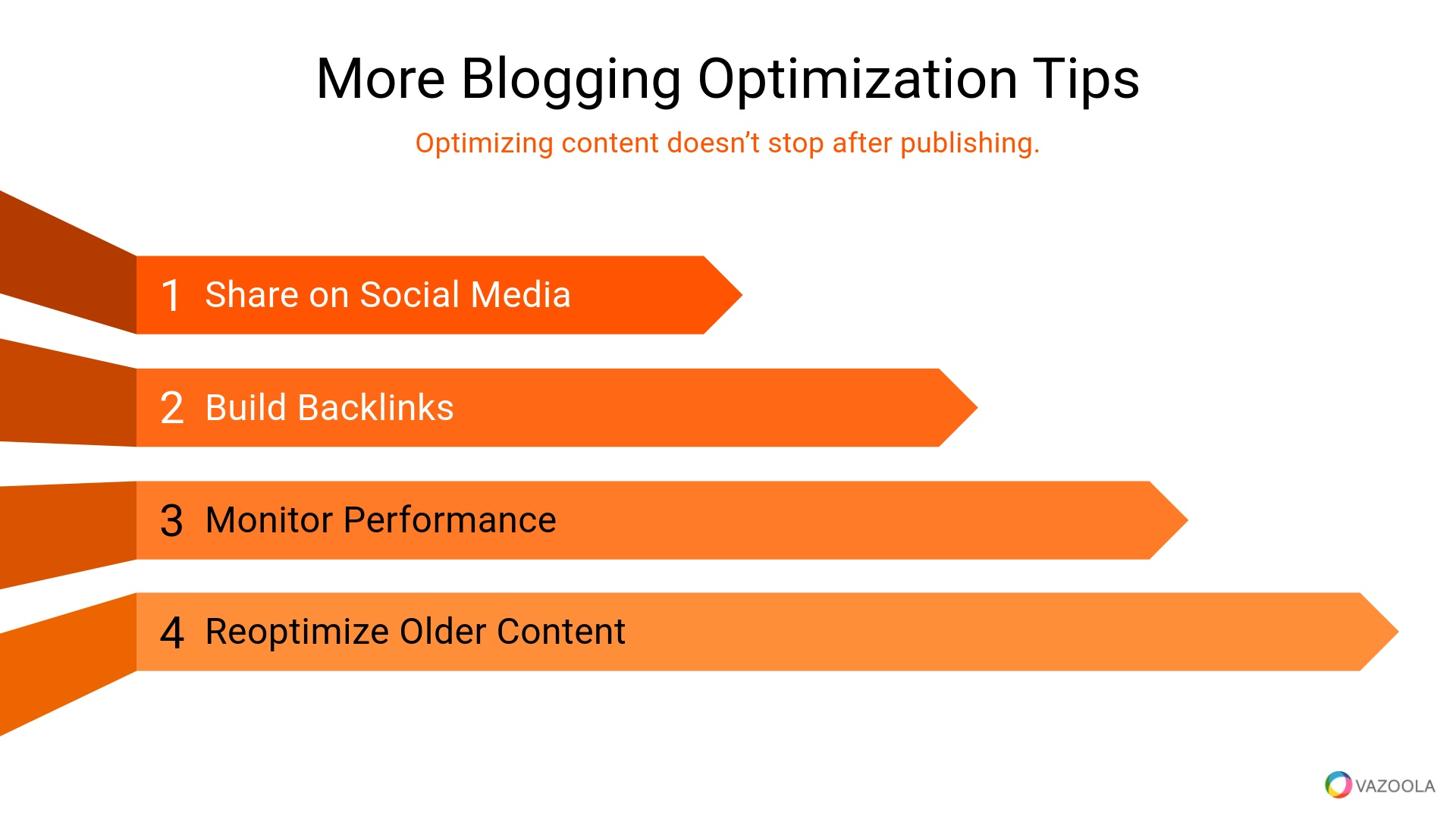
-
Share on Social Media: Repurpose content into bite-sized pieces for LinkedIn, X, Instagram, and Facebook.
-
Build Backlinks: Reach out to industry experts for guest posts or collaborative content.
-
Monitor Performance: Use tools like Google Analytics and Search Console to track your ranks and user engagement.
-
Reoptimize Older Content: Regularly conduct an SEO blog post update of old blogs and outdated posts with fresh data and new internal links.

Google’s passage ranking update allows sections of your content to rank independently. This means well-structured headings, subheadings, and concise answers within your blog can now surface in SERPs even if the entire page doesn’t rank highly. Format content using short, scannable sections with strong H2 and H3 tags to take advantage of this.
Drive Traffic with Blog SEO
So, does blogging help SEO? Do you now know how to write blogs for SEO?
SEO-optimized blog articles generate organic traffic, engagement, and authority, but success depends on providing actual value to readers. Following this checklist and keeping your blog updated will keep your content competitive in 2025 and beyond.
If you’re looking for more expert SEO strategies, explore all of the available resources at Vazoola.
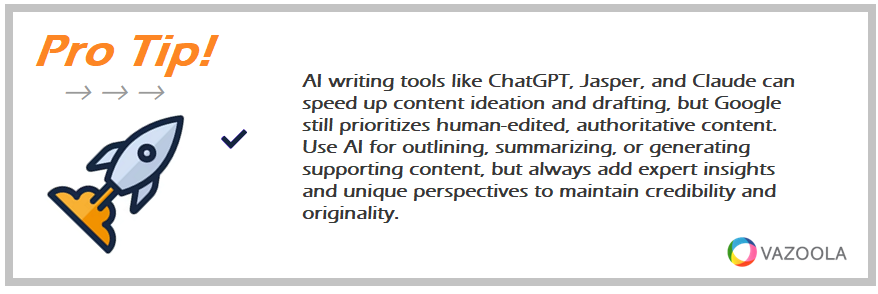
AI writing tools like ChatGPT, Jasper, and Claude can speed up content ideation and drafting, but Google still prioritizes human-edited, authoritative content. Use AI for outlining, summarizing, or generating supporting content, but always add expert insights and unique perspectives to maintain credibility and originality.

